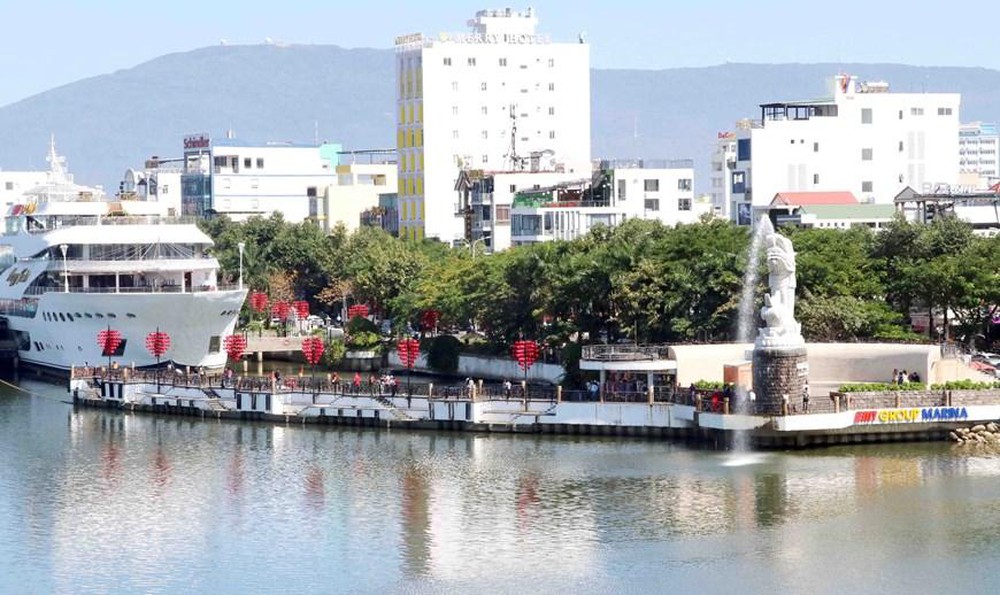Director of the city’s IT Department Nguyen Quang Thanh said at the launch of the city’s plan towards 2030 with a vision to 2045 on April 11 that it would be built in three phases with total investment of 2.14 trillion VND (95 million USD), of which 30 percent would come from the State budget.
The city will set aside VND941 billion for developing smart infrastructure and a database from now until 2020, while the remainder will be used for rendering smart versions of applications during the 2021-2025 period.
The city will continue to invest in other projects in the 2026-2030 period, aiming to widely introduce smart applications to local people and companies, Thanh added.
The smart city scheme will focus on 16 fields within the six main groups of management, economy, environment, life, citizens and traffic. In particular, tourism will serve as the key point in developing a smart economy, with investment focused on the smart tourism monitoring system, database and smart travel cards.
Thanh said the city had approved the framework the plan in 2018 with information and communication technology (ICT) infrastructure and database.
It will include smart management, smart economy, smart environment, smart living, smart citizens and smart traffic to connect the city to the 126 ASEAN ‘smart city’ network, Thanh said.
“The plan will help develop Da Nang as a ‘start-up and innovative’ city in creating a driving force for socio-economic growth for the central region of Vietnam.”
Da Nang was the first city in Vietnam to launch an e-Government system in 2014, and transferred the system to 16 cities and provinces in 2016.
According to a report, Da Nang’s e-Government system had been used by 225 agencies and 4,000 users.
Da Nang had provided 1,200 online administration procedures, including one-stop shops, residential management, public transport and water supervision through the e-Government system, while free wireless internet services offer a maximum of 20,000 connections in public places, according to the city’s information and communications department.
Thanh also said the plan would raise funds from partners including the Vietnam Posts and Telecommunications (VNPT) Group; Software giant FPT, Viettel Group, the World Bank, Vietinbank and KOICA and other ODA.

A corner of Da Nang City by the Han River. (Photo: VNA)
Nguyen Thanh Phuc from Ministry of Information and Communications said the plan would save 1 trillion VND (44.2 million USD) and 20 percent of other costs for human resources in the city.
Phuc said the plan would also help promote transparency, while improving administrative reform.
He said residents would have easy access to clear information on land, administrative procedure, planning, social services, disaster warnings, healthcare and education online.
The city’s IT infrastructure was available for smart connections for air control, water, garbage, meteorology and energy agencies. It could also provide earthquake and tsunami warnings, and data on flooding, erosion, sewage management and food safety.
Tran Quoc Thai, deputy head of the Urban Development Agency at the Ministry of Construction, said on the sidelines of the event that Danang would face several obstacles due to an inefficient infrastructure and database when developing the smart city. Accordingly, stronger cooperation between departments and agencies as well as the establishment of appropriate policies are needed.
As for the corporate viewpoint, ABB Vietnam General Director Brian David Hull said that the city had to develop the smart city model based on the demands and expectations of local residents. The authorities should help the locals fully understand the impact of fulfilling their demands for the smart city, while setting specific goals to realize the scheme, according to him.
Regarding the upsides of the smart city, the city will save up to VND1 trillion annually as well as at least 10% from other sources once the smart city is successfully launched, said Nguyen Thanh Phuc, head of the Authority of Information Technology Application at the Ministry of Information and Communications.
The city’s software exports grew in 2018 to 78 million USD.Last year, Da Nang’s information technology and communications industry earned 1.23 billion USD in revenue, of which 68 percent was from the IT and electronics manufacturing sectors, contributing 5.5 percent to Da Nang’s Gross Regional Domestic Product (GRDP).
There were 3,000 IT businesses with 25,000 jobs, of which 43 percent were in software services and IT outsourcing.
According to the department, Japan and the US were seen as the two key markets for Da Nang’s software exports, accounting for 72 percent of export turnover in 2018.
The city has launched the first stage of the 341ha Da Nang Information Technology Park (DITP) – central Vietnam’s ‘Silicon Valley’ - with total investment of 278 million USD.
The park will create revenue of 1.5 billion USD each year with 25,000 jobs and a satellite city of 100,000 people.
Da Nang’s software park has been recognised as a centralised information technology centre, the third in Vietnam after Hanoi and Ho Chi Minh City.

















